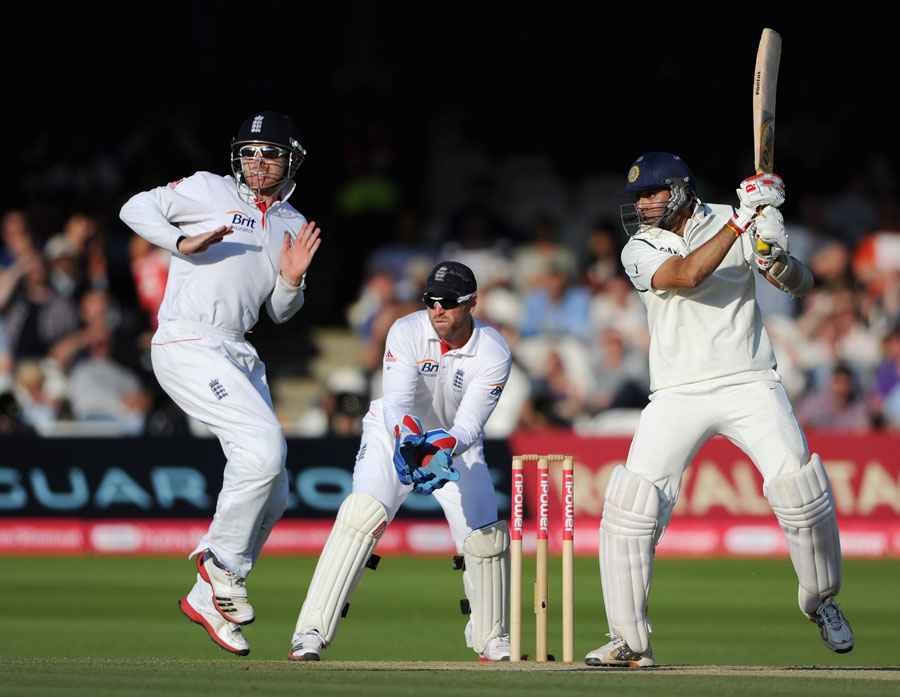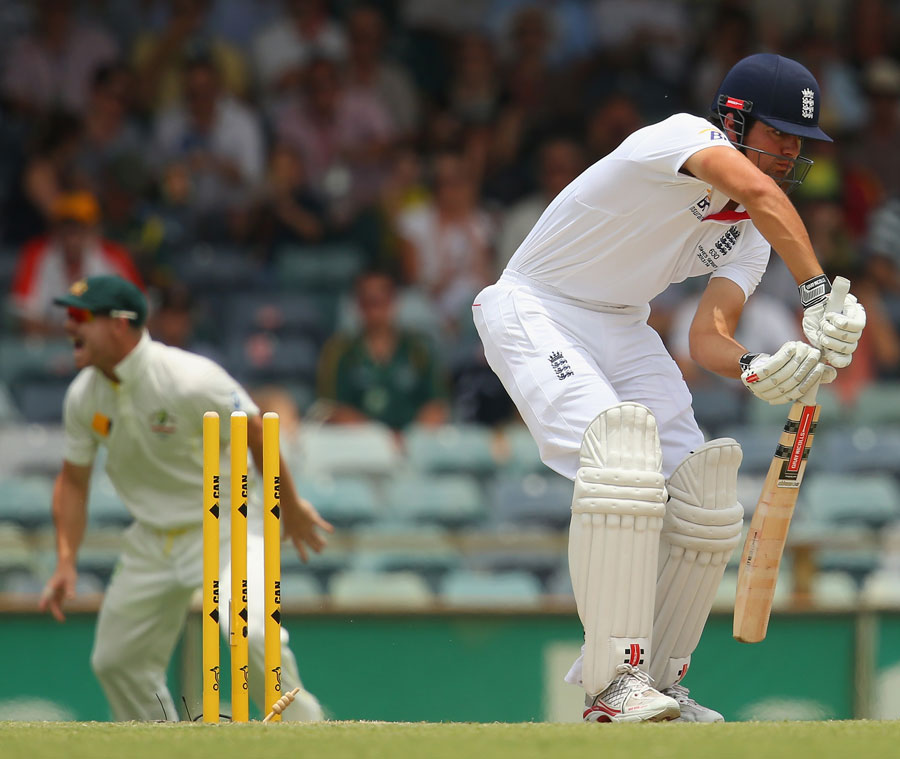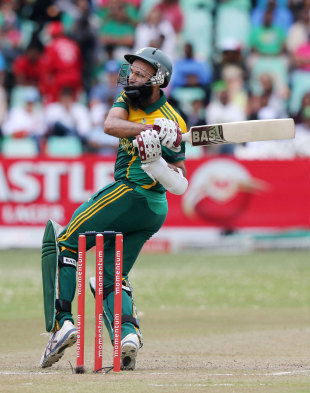
Batting legend Rahul Dravid shared his thoughts on India’s troubles with spin and the dynamics of technique in an exclusive conversation with The Hindu.
Here is the first part of excerpts from the interview.
Q. Indian batting has become increasingly vulnerable to spinners over the last few years.
Playing spin was one of our big strengths. What can happen is that when you are with an international team you are not getting to play a lot of spin bowling in matches. Perhaps the pitches in India have changed.
Q. Does it boil down to the use of feet?
Good footwork certainly helps, but different players can play spin differently. Even in the team that I played, Laxman for example, would use his feet, but not that much. He had great reach and used the depth of the crease well. He didn’t have a sweep shot, but had a great on-drive.
Sehwag used his feet against spin a lot more than some of us.
Ganguly stepped down to the left-arm spinner whenever he could.
It always helps to have a sweep shot.
Q. The present day batsmen are playing too many shots too early against spin?
You need to be a bit more patient against spin. People now want to dominate the spinner from the beginning.
Sometimes we need to give the ball the respect it deserves.
Q. Batsmen rarely come across worthy spinners in domestic cricket these days.
You still have the odd good spinner in domestic cricket, but the numbers have dipped. The top four spinners are good but we had a lot more spinners in the domestic scene then.
Maybe, domestically, our batsmen are not getting exposed to quality spin bowling. Wickets have improved in India too. I have played on some absolute turners.
Q. International line-ups have become increasingly vulnerable on pitches doing a bit.
You are seeing a lot of results in Tests. People are playing more aggressively.
The flip side of that is, sometimes, on tricky wickets where there is seam and swing or turn, you get found out.
Generally, very rarely do you get seaming or turning wickets in international cricket these days. Most wickets are flat.
If you see a difficult wicket, you should have a certain level of personal pride to perform. If you have that you will practice for it.
To succeed in any form of the game, your game has to be built around your defence. It then expands from there.
Q. Do you believe the cash-rich T20 format has taken the cricketers’ focus away from Tests?
To be a successful Test cricketer was our primary focus then. Now you can easily make a living without being a Test cricketer. Maybe the incentive is not there anymore.
Then it boils down to personal pride, getting satisfaction in succeeding in all and the most difficult of conditions.
Q. What, in your mind, is good footwork?
Good footwork is being able to pick the length of the ball early, get to it as quickly as possible and get yourself into a good position. Good footwork is really about using the depth of the crease when you need to go back, and getting a good stride forward when you need to go forward.
You need to ensure that you are not stuck in the crease.
Q. As we saw with the Aussies in England recently, batsmen are increasingly vulnerable on or outside the off-stump.
The key is being balanced and knowing your head position. You need to be going towards the ball than across the wicket. The body weight is going down the wicket than across the wicket.
Once your head starts falling over and goes across the wicket, you lose [sense of] where your off-stump is. Your head has to be in the right position to know where your off-stump is.
Q. Sunil Gavaskar recently spoke about the alignment of right eye with the off-stump.
I thought that was a brilliant technical suggestion. If you are balanced, with your right eye guiding where your off-stump is, then there is a good chance that you go down the wicket, the weight is going towards the ball, and your head is still and in a good position. Anything outside the right eye-line you could leave.
But if you are going across the stumps, your right eye actually loses where your off-stump is. And you end up playing balls that are wide outside the off-stump.
Q. Do you believe the wide and excessive back-lifts are an issue too?
Typically, you want the bat to come from second slip, swing around and come down straight.
Hashim Amla picks up his bat, almost towards gully, but when it comes down it does so really straight. That’s what really matters.
The ideal way to pick it up will be between first and second slip. But there are cases of people who pick it up slightly wider but are able to align it straight.
I used to pick it up a lot wider than first or second slip, but generally I was able to get into good positions to bring the willow straighter.
When I was not playing well, that was an area that bothered me. If I wasn’t able to get the timing right of bringing the bat down, then balls, especially those coming back in, got me bowled or lbw, which happened towards the end of my career.
------
Sanjay Manjrekar on Playing Spin (from Cricinfo)
I think batsmen around the world are not playing spin too well these days.
We have seen it in the Ashes, seen Sri Lankan batsmen struggle against the legspin of Yasir Shah, and now India disintegrate against Rangana Herath to lose a Test match that was firmly in their grasp. All this is suggestive of the fact that international batsmen are not playing spin too well at the moment.
The focus is so much on playing pace and seam well that it seems there is no headspace left for them to try to be adept at spin too. Before India went to England last summer, how many of their batsmen tried to hone their skills against offspin? I am sure James Anderson and Stuart Broad would have been on their minds, not Moeen Ali. No wonder Moeen ended up getting 19 wickets in that series.
Historically, Indian batsmen have tended to take spin lightly. You just have to watch them bat in the nets - they bat with caution and respect against fast bowlers, but when they see a spinner come in to bowl they dance down the pitch to hit the ball for a six. They are not fussed if they miss a few; they basically look to have fun against the spinners before they put their heads down and get serious against the fast bowlers.
Then, in a tense match situation, when the ball is turning square and the batsman sees four fielders around the bat, dancing down the pitch and hitting the ball into the stands is not an option any more, but they do not know what to do instead. Now the batsman has to do something he has never done before: try and defend the spinner from the crease and make sure the ball rolls safely along the ground off the defensive bat, away from the close-in catchers.
This is a highly specialised skill, to defend confidently against the spinning ball, using only the bat, with catchers hovering four feet away. (With the DRS and umpires willing to give batsmen out lbw on the front foot, thrusting the pad at the ball is not an option any more, as it used to be in my time.)
It is a skill no one practises enough these days, and that is why you see a Rohit Sharma in defence planting his front foot on leg stump, to a turning ball from Herath that has pitched on middle and off stump.
The other critical defensive technique that has practically vanished from the game is a batsman trying to play a good-length ball and then letting it go at the very last minute, when he realises it has changed direction and is not going to hit the stumps any more. It's amazing to see how many batsmen get out - to seamers and spinners alike - while playing defensive shots to balls that are going to miss the stumps.
Mind you, in my time too, spinners were treated no differently in the nets. The advantage we had, though, was that we still played a decent amount of domestic first-class cricket as international players, so our skills against spin had not become dormant. But I remember, every time I came home to domestic cricket after travelling the world playing international cricket, it took some time getting used to playing spin well again.
In the first innings in Galle it was evident that the Indian batsmen were treating the Sri Lankan spinners with respect - they did not want to make the same mistakes they made against Moeen. But their defensive game against spinners is far from perfect.
 VVS Laxman set a worthy example of how to play on a pitch that takes turn: by scoring more off the back foot than off the front © Getty Images
VVS Laxman set a worthy example of how to play on a pitch that takes turn: by scoring more off the back foot than off the front © Getty ImagesEvery time an Indian batsman decides to get on to the front foot to defend against spin, I cringe. They leave far too much distance between the bat and the spot where the ball has pitched. This is a recipe for disaster on a turning pitch. By leaving this space between the bat and the spot where the ball has pitched, you are allowing the ball to spin and bounce or straighten. You are giving the ball the space to behave mischievously. This is how Ajinkya Rahane got out in the first innings and Virat Kohli in the second - two big wickets.
The golden rule of playing spin is judging the length early, and then, when choosing to play on the front foot, getting right on top of the ball to smother its spin and whatever venom it carries.
If you think you can't reach the pitch of the ball with the front foot, go right back in the crease and watch the ball closely off the pitch. In fact, on turning pitches you should look to score more off the back foot than off the front, just as VVS Laxman used to do. When you are on the back foot, because the ball is turning so much, you get the width to play the cut and the pull or play it away for a single safely. Catchers around the bat are placed there mostly for errors arising out of front-foot defensive shots.
With all good intentions, domestic pitches have changed in India. There is more grass on the pitches now, and spinners don't rule the roost any more. The flip side is, this means less good practice against spin for Indian domestic batsmen. KL Rahul, very much a recent product of Indian domestic cricket, looked far more assured against pace than he did against spin in Galle. That is telling.
The fact is quite simple: your chances of surviving against spin increase if you practise for hours in the nets what you need to do in the match.

